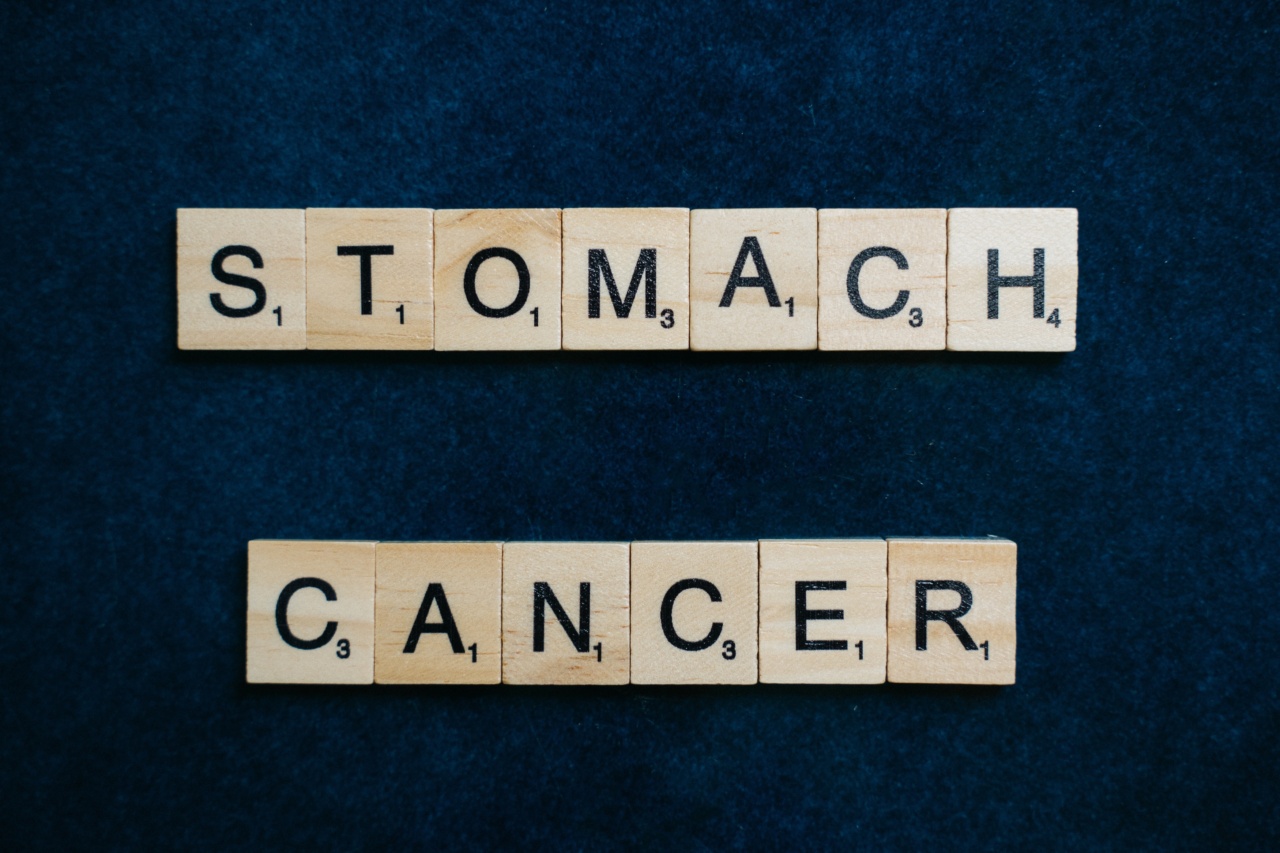Stomach cancer, also known as gastric cancer, is a type of cancer that develops in the lining of the stomach. It is the fifth most common cancer worldwide and the third leading cause of cancer deaths.
There are various types of stomach cancer, and each type has different characteristics, risk factors, and treatment.
Stomach cancer is classified into four main categories based on the type of cell it originates from:.
1. Adenocarcinomas
Adenocarcinomas are the most common type of stomach cancer, accounting for 90% to 95% of all cases. They develop when the cells lining the stomach’s innermost layer, the mucosa, start growing abnormally and form a tumor.
Adenocarcinomas are further classified into two subtypes:.
Intestinal-Type Adenocarcinoma
Intestinal-type adenocarcinoma is the most common subtype of adenocarcinoma. It tends to affect older people, males more than females, and people with a history of gastritis, peptic ulcers, or Helicobacter pylori infection.
This subtype grows slowly and is usually localized to the stomach, making it more treatable.
Diffuse-Type Adenocarcinoma
Diffuse-type adenocarcinoma is less common than intestinal-type. It usually affects younger people and has a higher likelihood of spreading to nearby organs. This subtype grows rapidly and is more difficult to treat.
2. Gastrointestinal Stromal Tumors (GISTs)
GISTs are rare tumors that develop from cells in the stomach’s muscular layer or wall. They may also develop in other parts of the gastrointestinal tract such as the small intestines and esophagus.
GISTs are usually slow growing and may not cause symptoms until they grow large enough to press against surrounding organs.
3. Lymphomas
Lymphomas are cancers that develop in the lymphatic system, which is a network of vessels and organs that help fight infections. Stomach lymphomas usually arise from the lymphoid tissue in the stomach’s mucosa or wall.
They are usually rare and account for about 4% of all stomach cancers.
4. Carcinoid Tumors
Carcinoid tumors are rare neoplasms that develop from neuroendocrine cells in the gastrointestinal tract. They grow slowly and may not cause symptoms until they produce hormones that can cause flushing, diarrhea, and abdominal pain.
Carcinoid tumors typically account for less than 1% of all stomach cancers.
Risk Factors for Stomach Cancer
Several factors increase the risk of developing stomach cancer. These include:.
- Age: Stomach cancer is more common in people over the age of 50
- Gender: Men are more likely to develop stomach cancer than women
- Diet: Consumption of a diet high in smoked, salted, or pickled foods increases the risk of developing stomach cancer
- Smoking: Smoking increases the risk of developing stomach cancer by damaging the DNA in stomach cells
- Family history: People with a family history of stomach cancer are at an increased risk of developing the condition
- Medical conditions: Gastritis, peptic ulcers, and Helicobacter pylori infections increase the risk of developing stomach cancer
Symptoms of Stomach Cancer
Stomach cancer may not cause symptoms in its early stages. As the cancer grows, various signs and symptoms may develop. These include:.
- Indigestion and abdominal discomfort
- Heartburn and acid reflux
- Nausea and vomiting
- Loss of appetite
- Fatigue and weakness
- Bloating and fullness after eating
- Blood in the stool or vomit
- Unexplained weight loss
Treatment for Stomach Cancer
The treatment for stomach cancer depends on the type and stage of the cancer. Treatment options may include:.
- Surgery: Surgical removal of the tumor and some surrounding tissue may be done for localized cancer
- Chemotherapy: Chemotherapy drugs may be used to kill cancer cells and shrink tumors
- Radiation therapy: High-energy beams may be used to kill cancer cells
- Targeted therapy: Drugs that target specific cancer cells may be given
- Immunotherapy: Drugs that help the body’s immune system to fight cancer cells may be used
Conclusion
Stomach cancer is a serious condition that can be classified into four main categories: adenocarcinomas, gastrointestinal stromal tumors, lymphomas, and carcinoid tumors. Each type has different characteristics, risk factors, and treatment.
Early detection and timely treatment are crucial in improving the prognosis of stomach cancer. People at risk of developing stomach cancer should undergo regular medical check-ups to detect any warning signs.
























